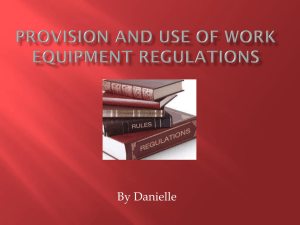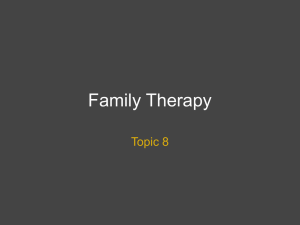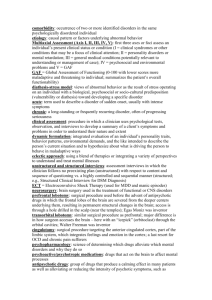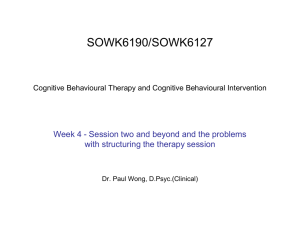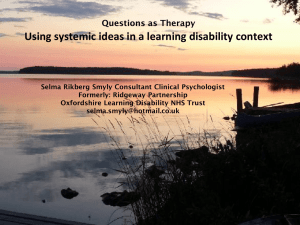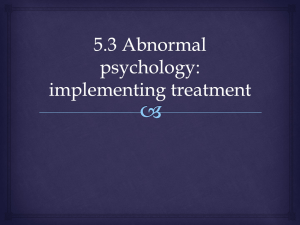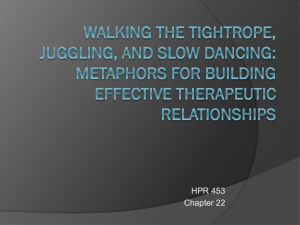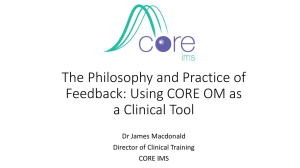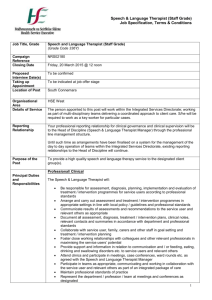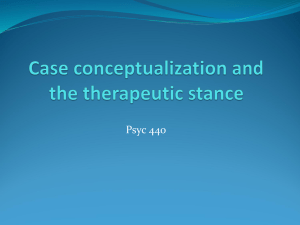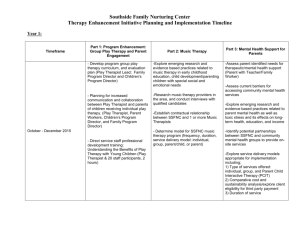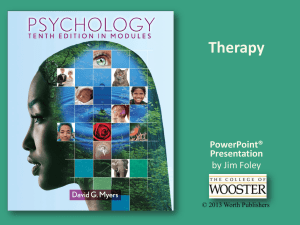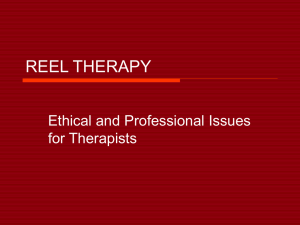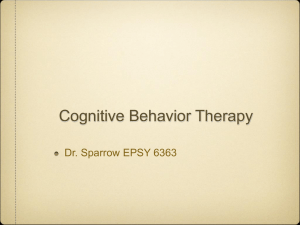Cognitive Behavioral Play Therapy (CBPT)
advertisement
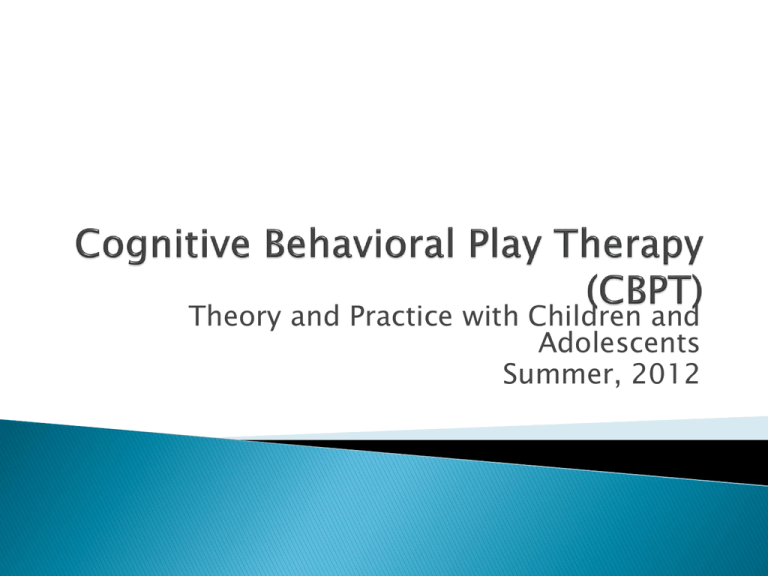
Theory and Practice with Children and Adolescents Summer, 2012 Cognitive-behavioral play therapy incorporates cognitive and behavioral interventions within a play therapy paradigm (Knell, 1997). Focus is more on psychopathology rather than personality development. “Factors that contribute to development gone awry” (Knell, 1997) 3 Major Premises of Cognitive Therapy ◦ Thoughts influence the individual’s emotions and behaviors in response to events ◦ Perceptions and interpretations of events are shaped by the individual’s beliefs and assumptions ◦ Errors in logic or cognitive distortions are prevalent in individuals who experience psychological difficulties (Beck, 1976). In adults distortions are considered irrational. In children they are considered maladaptive. By nature children are illogical, egocentric, and concrete. Psychopathology is a result of one’s perceptions of events-not the circumstances themselves-that determine how a person understands events. *If we know the meaning that a person attaches to particular situations, we can predict his or her emotional reactions. Intricate reciprocal interaction among cognitions, emotions, behaviors, and environment. The play therapist seeks to reduce symptoms, modify attitudes, beliefs, and expectations. CBPT places a strong emphasis on the child’s involvement in treatment and on a framework for the child’s participation by addressing issues of control, mastery, and responsibility for one’s own behavior change. It is brief Time limited Structured Directive Problem oriented Depends on a sound therapeutic relationship which incorporates the therapy as educational “Quieting down of the hyperactive organization” (Rachman, 1968). Give children the opportunity to experience and to test reality of verbal or pictorial cognitions that are causally connected to their affect. Modification or shift of the child’s ideational system. Identifying Irrational Beliefs ◦ Therapist utilizes play to uncover these Changing Irrational Beliefs (Bibliotherapy) ◦ Therapist utilizes play to replace irrational belief (Maladaptive) Positive Self Statements ◦ Therapist verbalizes the benefits of changing maladaptive belief (“It will get easier”) Shaping Exposure and Response Prevention ◦ Therapist uses systematic desensitization ◦ Therapist models scenario without disaster Positive Reinforcement (Contingency Management) ◦ Therapist praises with verbal and tangible reinforcers Shaping Socially Appropriate Expression of Feelings ◦ Therapist gives words to feelings Preoperational Thought ◦ ◦ ◦ ◦ ◦ ◦ ◦ ◦ Illogical - Attend to only one aspect at a time Concrete - Judgment Influenced by perceptions Egocentric Less Reflective in Thought Object vs. Label Symbolic Thought/Language Emerging No logical reasoning Representation of Object in its Absence Match between developmental level of child and complexity of the intervention Capitalize on child’s strengths Decrease emphasis on complex linguistic cognitive tasks Experiential Help child develop match between behaviors and feelings Learn to express maladaptive behaviors in more adaptive ways Encourage language development regarding affect Anxiety in Preschoolers ◦ Butterflies in my Stomach ◦ Worry Bee ADHD in Young School Age Children ◦ Color your World (Activity) ◦ Beat the Clock (Activity) Depression ◦ Painting/Drawing ◦ Theme Song (Activity) Play my Theme Song What do we talk about now? What is your Theme Song? How will you handle it if you don’t like the song? Activities for Cognition ◦ I like my neighbor who….. ◦ Puppets ◦ Sandplay Activities for Behavior ◦ Candy Temptation (activity) ◦ Feeling Board (Flip Chart) ◦ Puppets Activities for Cognition ◦ Feeling Word Game (Activity) ◦ Puppets ◦ Garbage Bag Technique Activities for Behavior ◦ ◦ ◦ ◦ ◦ ◦ Pick Up Sticks Slow Motion Game** Candy Temptation Jenga Blowing Bubbles ** Beat the Clock ** Activities for Cognition ◦ A lot on my Plate (Activity) ◦ Anger Shield(Activity) ◦ Theme Song Activities for Behavior ◦ Clay vessel ◦ Stress Beaker (Activity) ◦ Journaling Activities for Termination ◦ ◦ ◦ ◦ Construction Paper Rings Calendar Pictures of self and therapist T-shirt Activities for termination ◦ ◦ ◦ ◦ T-Shirt Plants Video Time Capsule Activities for Termination ◦ ◦ ◦ ◦ Hero (Activity) Letter from Therapist Candle Lighting Ceremony Clay figure





